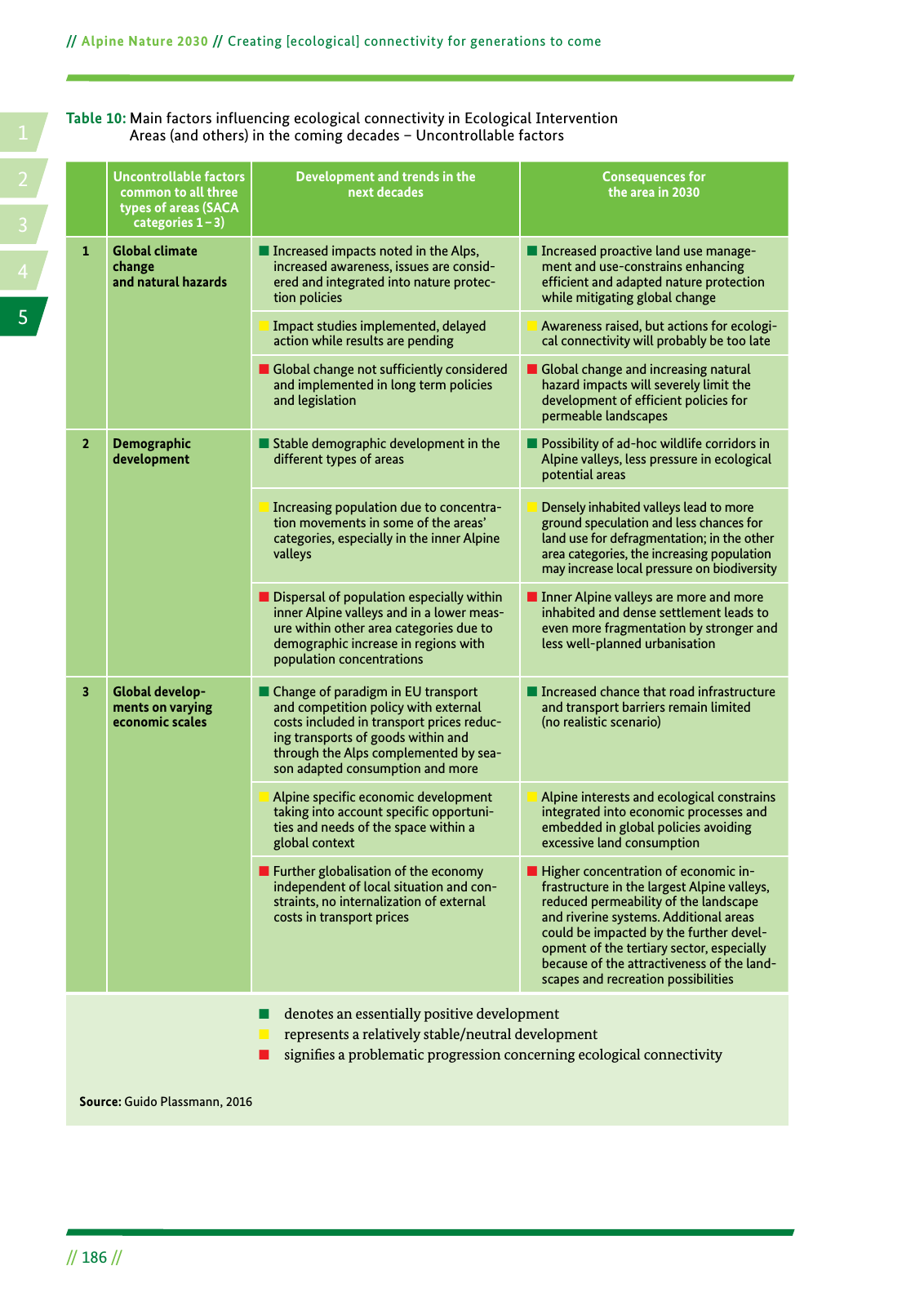14 2 5 3 Alpine Nature 2030 Creating ecological connectivity for generations to come 186 Table 10 Main factors influencing ecological connectivity in Ecological Intervention Areas and others in the coming decades Uncontrollable factors Uncontrollable factors common to all three types of areas SACA categories 1 3 Development and trends in the next decades Consequences for the area in 2030 1 Global climate change and natural hazards ó Increased impacts noted in the Alps increased awareness issues are consid ered and integrated into nature protec tion policies ó Increased proactive land use manage ment and use constrains enhancing ef cient and adapted nature protection while mitigating global change ó Impact studies implemented delayed action while results are pending ó Awareness raised but actions for ecologi cal connectivity will probably be too late ó Global change not suf ciently considered and implemented in long term policies and legislation ó Global change and increasing natural hazard impacts will severely limit the development of ef cient policies for permeable landscapes 2 Demographic development ó Stable demographic development in the different types of areas ó Possibility of ad hoc wildlife corridors in Alpine valleys less pressure in ecological potential areas ó Increasing population due to concentra tion movements in some of the areas categories especially in the inner Alpine valleys ó Densely inhabited valleys lead to more ground speculation and less chances for land use for defragmentation in the other area categories the increasing population may increase local pressure on biodiversity ó Dispersal of population especially within inner Alpine valleys and in a lower meas ure within other area categories due to demographic increase in regions with population concentrations ó Inner Alpine valleys are more and more inhabited and dense settlement leads to even more fragmentation by stronger and less well planned urbanisation 3 Global develop ments on varying economic scales ó Change of paradigm in EU transport and competition policy with external costs included in transport prices reduc ing transports of goods within and through the Alps complemented by sea son adapted consumption and more ó Increased chance that road infrastructure and transport barriers remain limited no realistic scenario ó Alpine speci c economic development taking into account speci c opportuni ties and needs of the space within a global context ó Alpine interests and ecological constrains integrated into economic processes and embedded in global policies avoiding excessive land consumption ó Further globalisation of the economy independent of local situation and con straints no internalization of external costs in transport prices ó Higher concentration of economic in frastructure in the largest Alpine valleys reduced permeability of the landscape and riverine systems Additional areas could be impacted by the further devel opment of the tertiary sector especially because of the attractiveness of the land scapes and recreation possibilities ó denotes an essentially positive development ó represents a relatively stable neutral development ó signi es a problematic progression concerning ecological connectivity Source Guido Plassmann 2016

Hinweis: Dies ist eine maschinenlesbare No-Flash Ansicht.
Klicken Sie hier um zur Online-Version zu gelangen.
Klicken Sie hier um zur Online-Version zu gelangen.